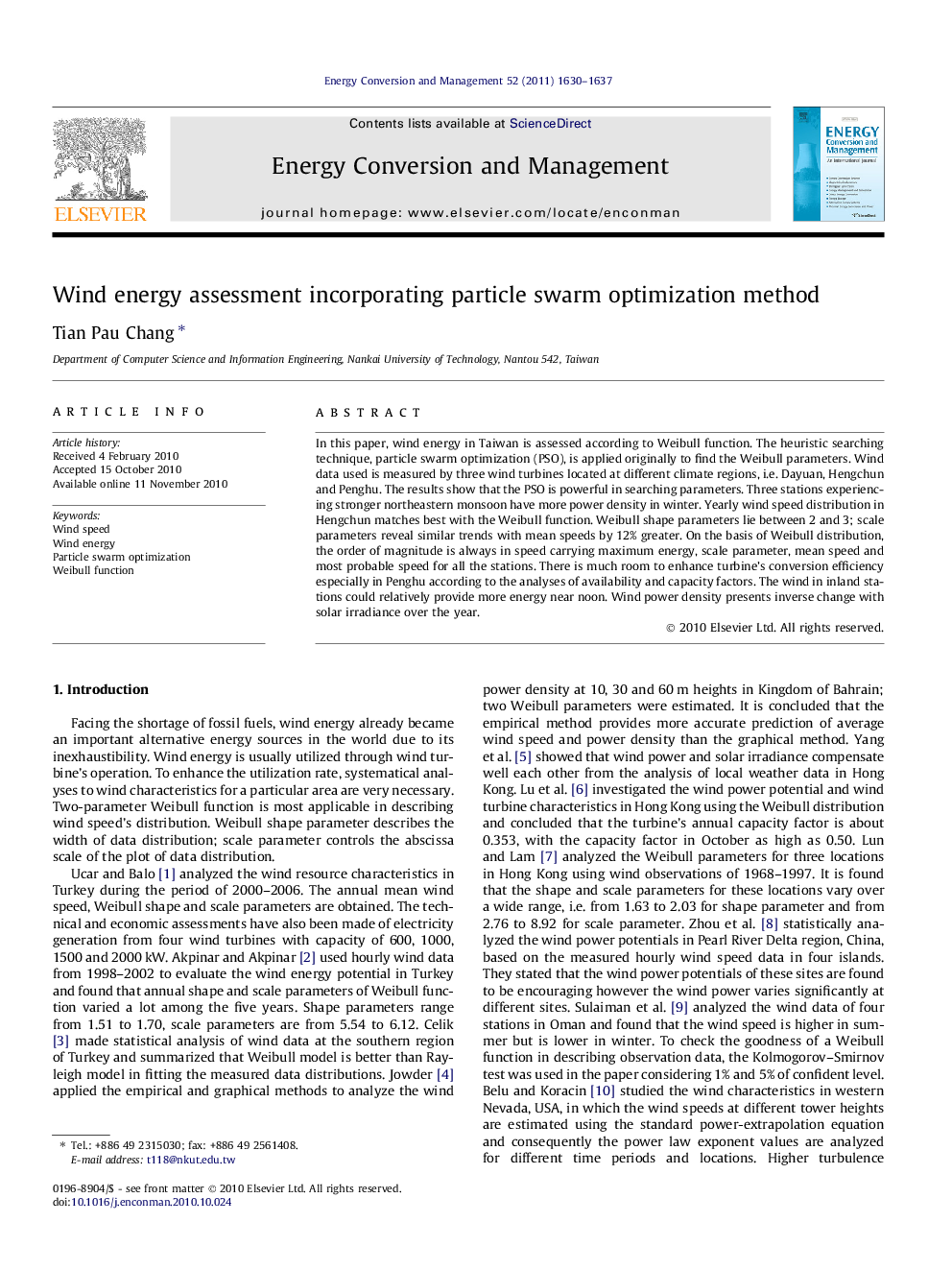| Article ID | Journal | Published Year | Pages | File Type |
|---|---|---|---|---|
| 764604 | Energy Conversion and Management | 2011 | 8 Pages |
In this paper, wind energy in Taiwan is assessed according to Weibull function. The heuristic searching technique, particle swarm optimization (PSO), is applied originally to find the Weibull parameters. Wind data used is measured by three wind turbines located at different climate regions, i.e. Dayuan, Hengchun and Penghu. The results show that the PSO is powerful in searching parameters. Three stations experiencing stronger northeastern monsoon have more power density in winter. Yearly wind speed distribution in Hengchun matches best with the Weibull function. Weibull shape parameters lie between 2 and 3; scale parameters reveal similar trends with mean speeds by 12% greater. On the basis of Weibull distribution, the order of magnitude is always in speed carrying maximum energy, scale parameter, mean speed and most probable speed for all the stations. There is much room to enhance turbine’s conversion efficiency especially in Penghu according to the analyses of availability and capacity factors. The wind in inland stations could relatively provide more energy near noon. Wind power density presents inverse change with solar irradiance over the year.
